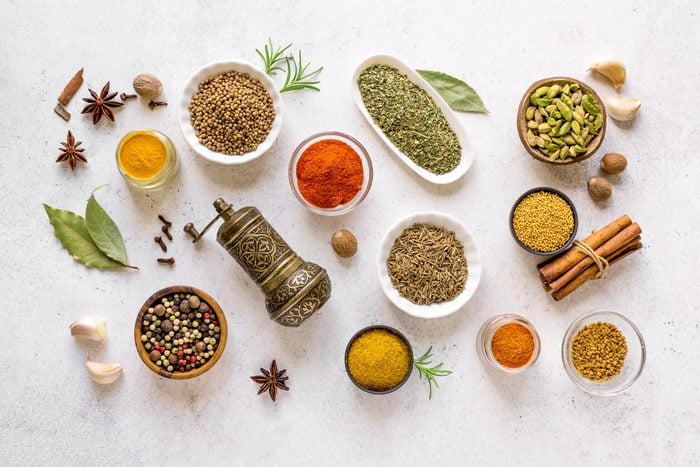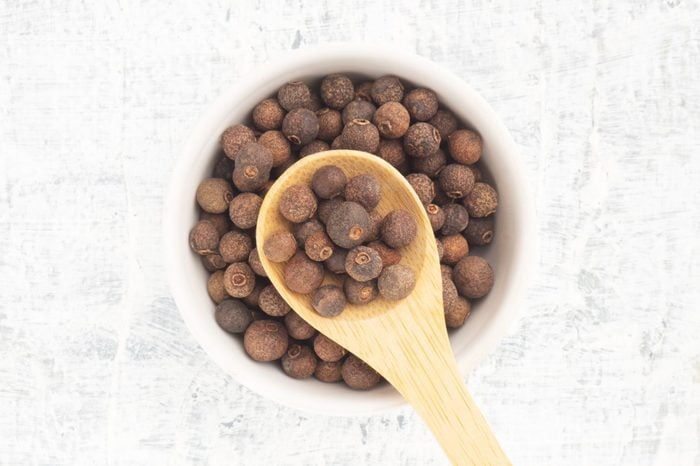
Allspice
Allspice, which acquired its name because it smells like the combination of several different spices, is the unripe berry of a tree that grows in Mexico and Central America. It’s common in Middle Eastern cuisine and North American desserts like pumpkin pie and apple pie. It’s also used as a pickling ingredient. If you’re familiar with Cincinnati-style chili, you might know that allspice is one of its key flavors, too.
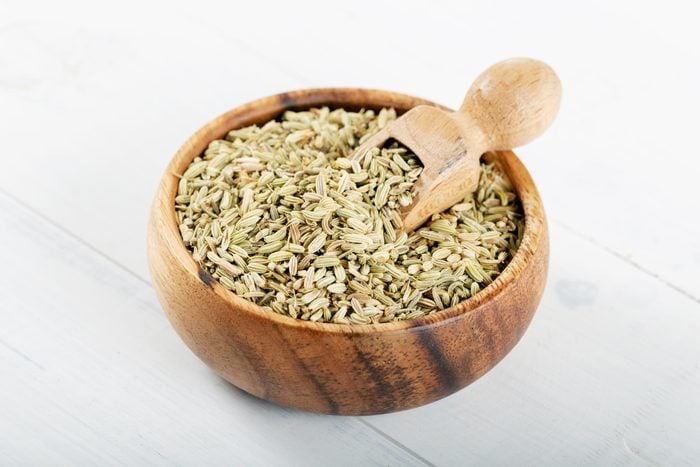
Anise
Anise has a licorice-like flavor and scent that is very similar to several other herbs and spices, including fennel and tarragon. The seeds of this annual plant are used as a flavoring agent in Italian sausage, pepperoni, ouzo and desserts such as anise cookies. In Roman times, cakes spiced with aniseed were served as a digestive following feasts, which led to the ritual of cakes being served at weddings.
Before you move ahead, also check our picks for the best herbs to grow indoors—you just need a sunny window, a planter and some soil.
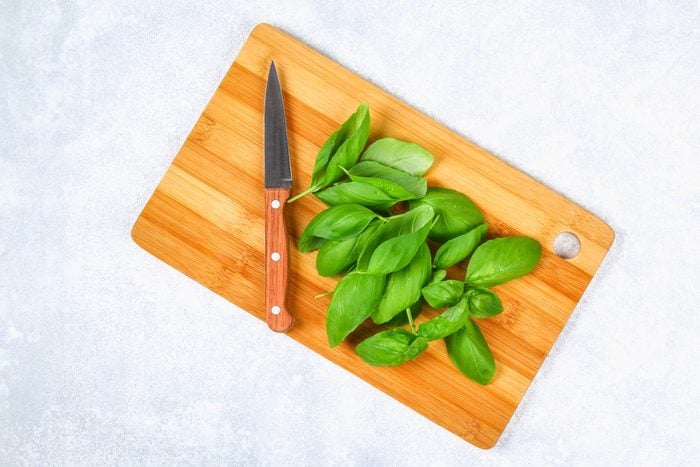
Basil
Basil is an herb prized for its intensely flavorful leaves, which are the main ingredient in pesto. The herb, which thrives in hot climates, is commonly used as a flavor enhancer in pizza, pasta and other Italian-style dishes. There are many types of basil, such as Thai basil and lemon basil, but the main variety in North America is sweet basil or Genovese basil. For year-round accessibility, you can grow basil indoors.
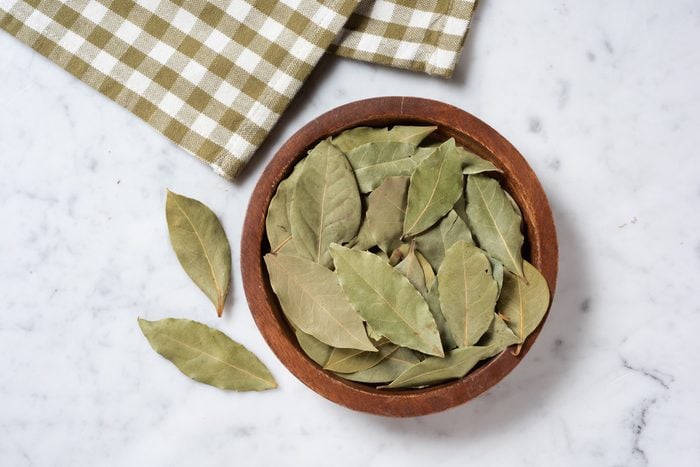
Bay Leaf
Bay leaves, almost always used whole, lend a subtle earthy hint to soups and stews and add flavor to brined meats. Unlike most other herbs, bay leaves should be removed from a dish before serving since they do not soften with cooking and are thus a choking hazard. Dried bay laurel leaves are central to Filipino cuisine, flavoring dishes such as menudo and adobo.
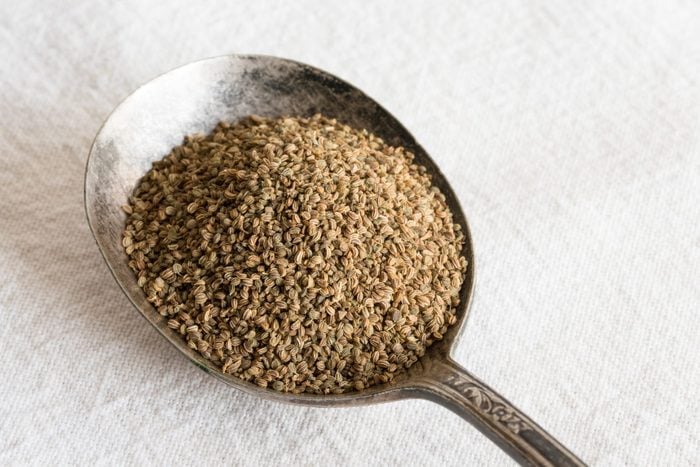
Celery Seed
Celery seeds, available both whole and ground, are harvested from the dried flowers of celery plants. These tiny, aromatic seeds are frequently used in pickling, brining, dry rubs and vinaigrettes. They’re also common in tomato-based recipes, from barbecue sauce and ketchup to Bloody Marys.
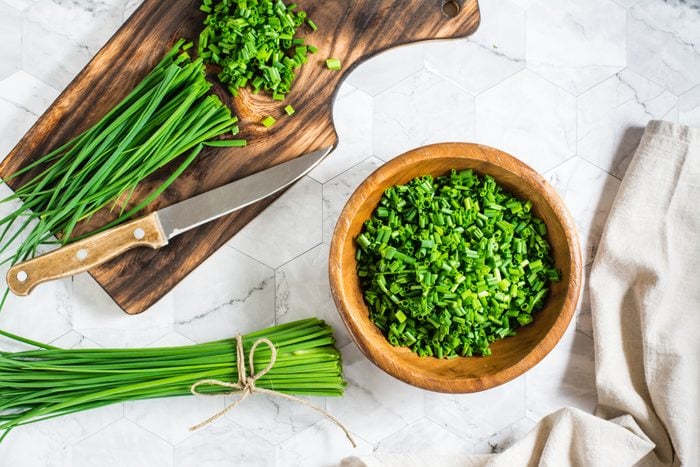
Chives
A member of the allium family, chives have a mild, onion-like flavor. Fresh chives, a spring delicacy, are best used as a garnish. Chive flowers, edible blossoms that grow on stalks, add pops of color and flavor to salads, and they can also be sauteed to add subtle flavor to dishes such as mashed potatoes. It’s easy to grow chives so they’re available whenever a recipe calls for them.
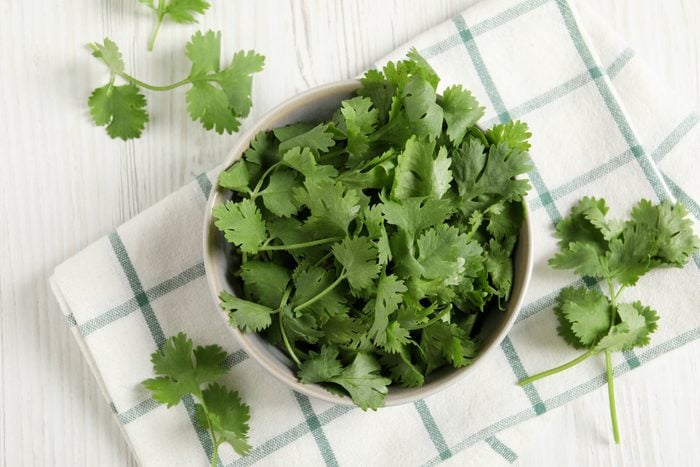
Cilantro
Cilantro is the leafy part of the coriander plant, which resembles flat parsley. Its flavor is often described as “fresh” and “green.” Latin and Indian dishes regularly call for cilantro, and the herb is commonly used to add another layer of flavor to Mexican dishes such as tacos or tostadas. You can grow your own cilantro indoors, too, which is ideal for when recipes call for a small amount.
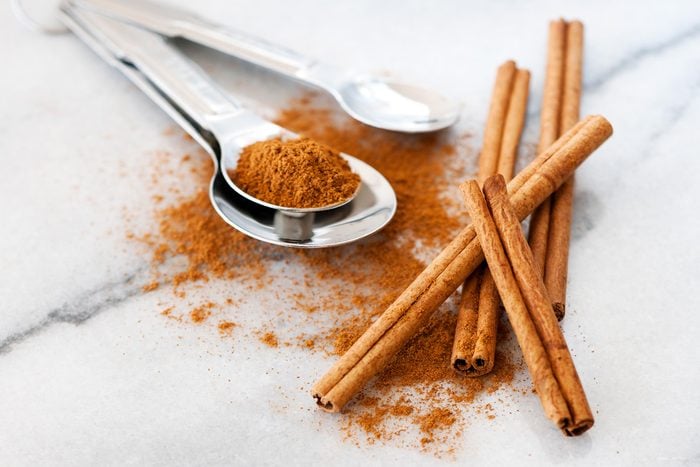
Cinnamon
Cinnamon, native to Sri Lanka and India, is the ground bark of evergreen trees related to laurels. With a warm, spicy flavor, cinnamon pairs well with apples and other fruits, and it’s commonly used in a plethora of baked goods such as cinnamon rolls and apple crisp. In many countries, cinnamon is used in savory dishes, such as chicken and lamb. This popular spice was once more valuable than gold!
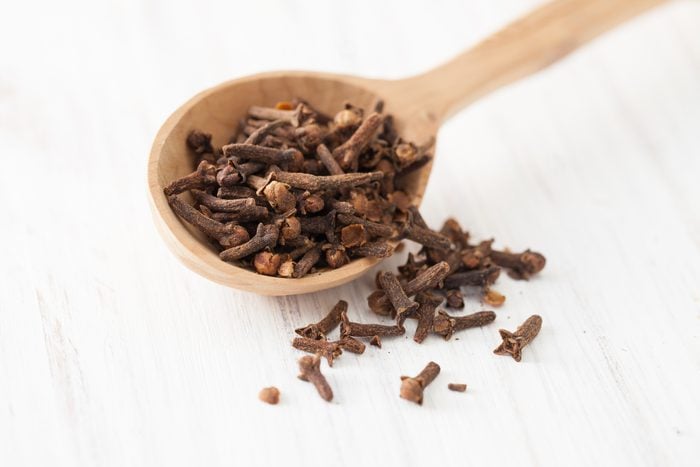
Cloves
Cloves give an intensely hot kick to holiday dishes such as mincemeat and mulled wine. In their ground form, cloves lend their heat to pumpkin pie, spice cakes and other fall and winter recipes. The dried flower bud of a tropical evergreen tree, cloves were used in antiquity, and were an integral part of the spice trade.
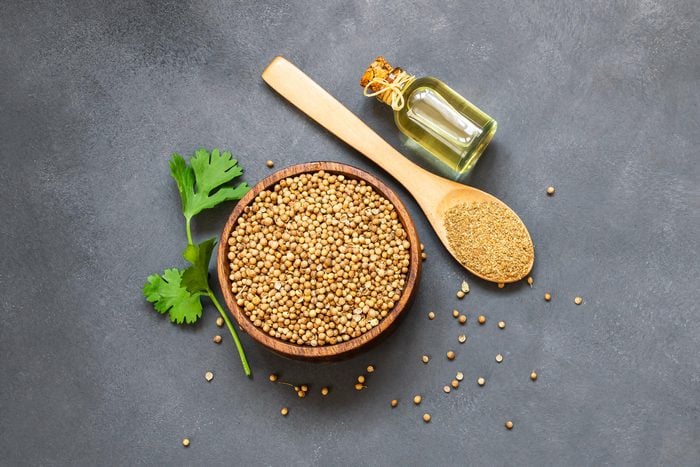
Coriander
Coriander is the seed of the coriander plant, which grows leaves that are called cilantro. It’s typically found in a powdered form and gives a slight citrusy flavor to Middle Eastern, Indian and Asian cuisines. It can be used in a wide variety of recipes, such as samosas, or as an ingredient in homemade curry powder. Coriander is an ancient herb; it’s mentioned in the Bible and has been found in tombs of the pharaohs.
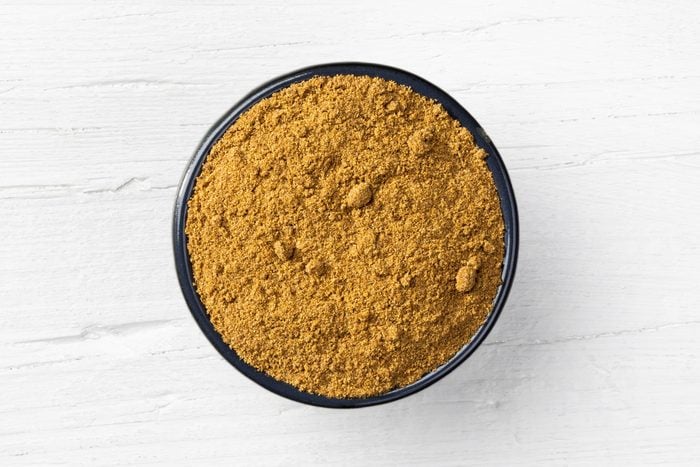
Cumin
Native to the Mediterranean, cumin is a spice made of the seed-like fruits of the cumin plant. It has a strong, earthy, warm scent and is used extensively in chutneys, chili and curry powders. It spices up everything from vegetables to meats and the plant even produces an essential oil used to add a spicy note to perfumes.
Editor’s Tip: Expand your spice cabinet and culinary creativity with a flavorful collection of Mediterranean spices.
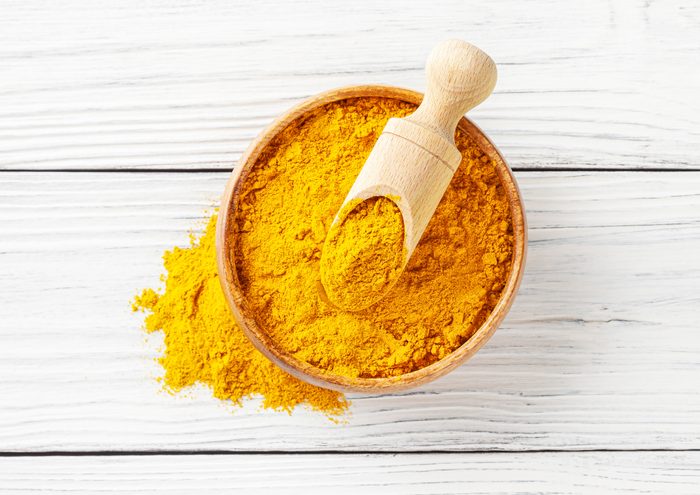
Curry
Curry powder is not a single spice—it’s actually a blend of spices that typically includes turmeric, giving it a yellow tone. Contrary to popular belief, authentic Indian cuisine does not use curry; it was created by the British to approximate the spices used in Indian cooking. Other spices commonly used in curry powder are fenugreek, cumin and coriander.
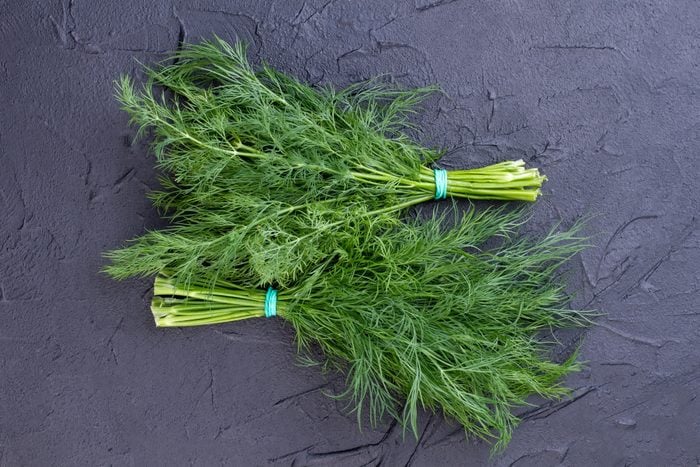
Dill
Delicate and feathery, fresh dill is in season in spring and early summer—though it’s available year-round thanks to greenhouses. It’s widely used in Europe, Ukraine and Russia, and it’s very popular in Scandinavia and the Baltic states, where it’s frequently used as a garnish for fish soup or shrimp sandwiches. Dill weed is dried dill leaves, and dill seed is used as a spice for dishes such as dill pickles or potato salad.
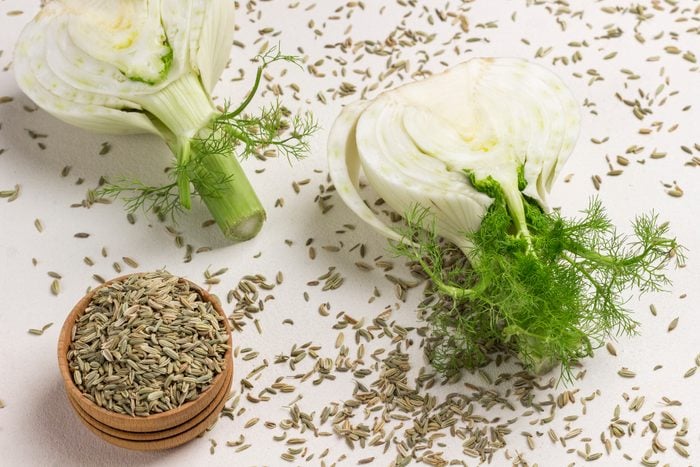
Fennel
Native to the Mediterranean, fennel is a spice, an herb and a vegetable, and it can be used in a wide variety of recipes. The bulb-like base is a versatile vegetable with a mild flavor that can be roasted alongside carrots, used as a crunchy base for a citrusy salad or added to soups and stews. Dried fennel seeds are a pungent spice. Depending on how it’s prepared, fennel can take on an anise or licorice-like flavor.
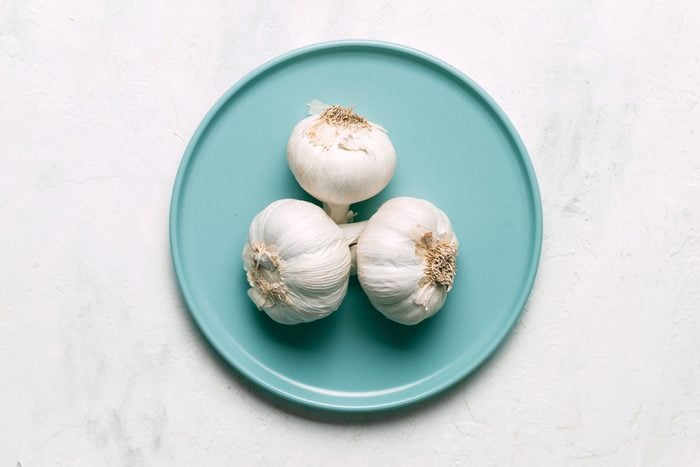
Garlic
Garlic—a member of the allium family, which includes shallots, leeks, chives and onions—has a powerful flavor and fragrance. The cloves and the powder form are exceptionally versatile and used in many different ways in cuisines around the world. It can be added to soups, sauces, marinades and spice rubs and is a key ingredient in many savory dishes. It burns easily, so recipes typically call for it to be added near the end of cooking.
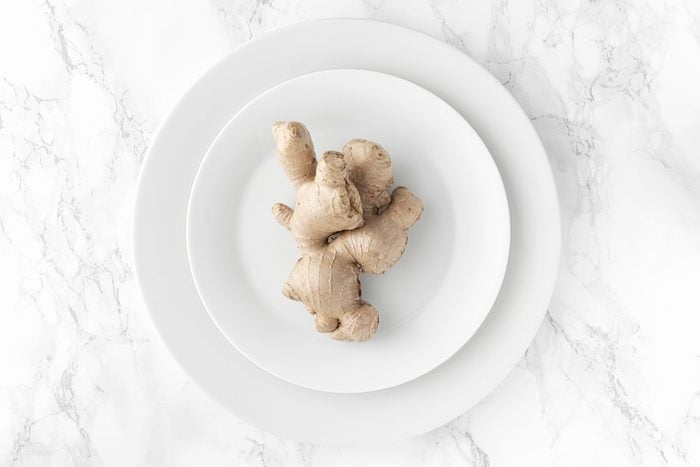
Ginger
Ginger has a peppery zing that marries well with both sweet and savory dishes. It’s used in Asian, Indian and Caribbean dishes, adding heat to everything from seafood to meat to vegetables, and stars in desserts such as gingerbread and gingerbread cookies. Ginger is the knobby root of the ginger plant and can be found fresh, powdered, crystallized or candied, pickled and preserved.
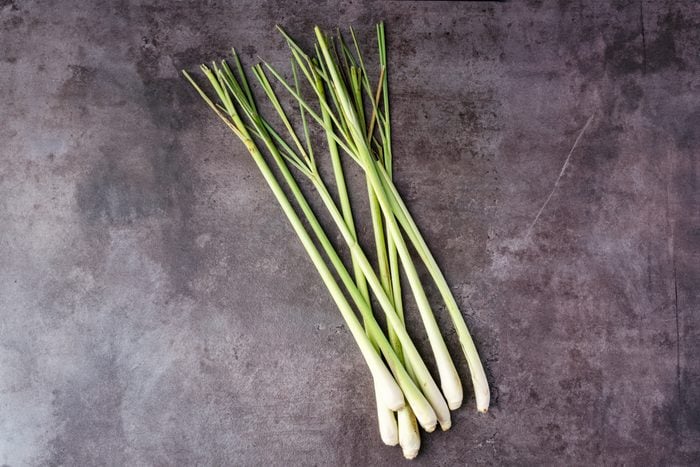
Lemongrass
Lemongrass is an herb that’s the stalk of the lemongrass plant. It grows in tropical climates and is used extensively in Vietnamese and Thai cuisines (like this hot and sour soup). Lemongrass can be either fresh or dried, but its fresh form is best, yielding a brighter, more complex flavor. The stalks can be used to impart a citrus flavor to curry pastes, broths or marinades.
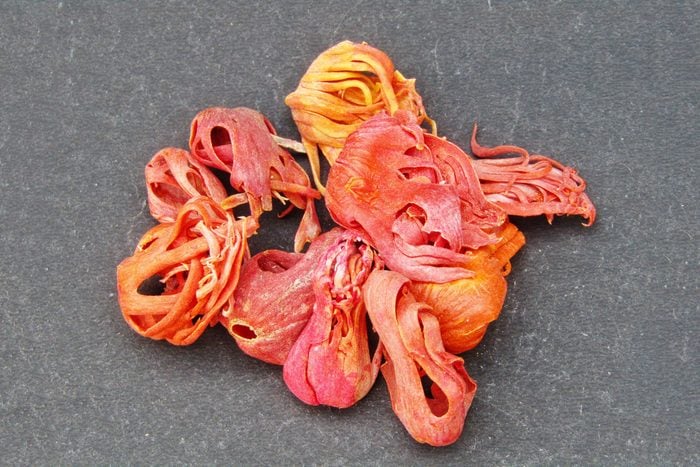
Mace
Spice blends such as garam masala and curries often use mace as one of the ingredients. Mace has a slightly warm flavor similar to nutmeg, but it’s a bit spicier and more intense. There’s a reason why mace tastes similar to nutmeg: It’s the lacy covering of the nutmeg fruit! It works well in recipes that use nutmeg, such as custards, cakes and stews. Keep in mind that a little goes a long way.
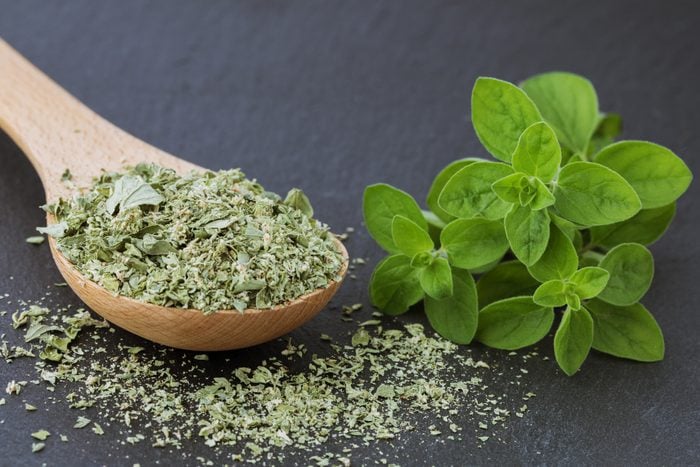
Marjoram
Marjoram, also called sweet marjoram, has an earthy, sharp flavor with hints of pine and citrus. It’s most commonly found in its powdered form, which lends flavor to a wide variety of foods from sausage and meats to poultry, vegetables and soups. If you use fresh marjoram, it’s best to add it at the last minute so it keeps its bright, fresh flavor.
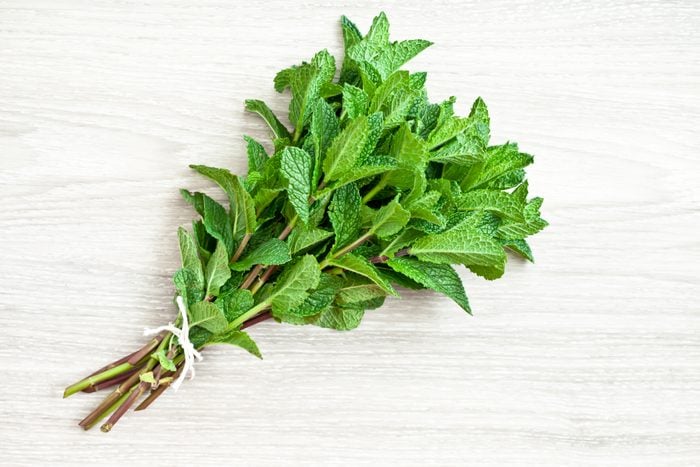
Mint
Mint has cooling properties, which makes it ideal as a contrast to hot and spicy dishes or added as a chiffonade to give flavor bursts to pasta and other dishes. Spearmint and curly mint are the most common mints used for culinary purposes and can also be grown indoors. Peppermint has an exceptionally strong menthol flavor that easily overwhelms other flavors, though peppermint oil is grown and processed for use in baked goods and confections. While you’re at it, get to know the difference between spearmint and peppermint.
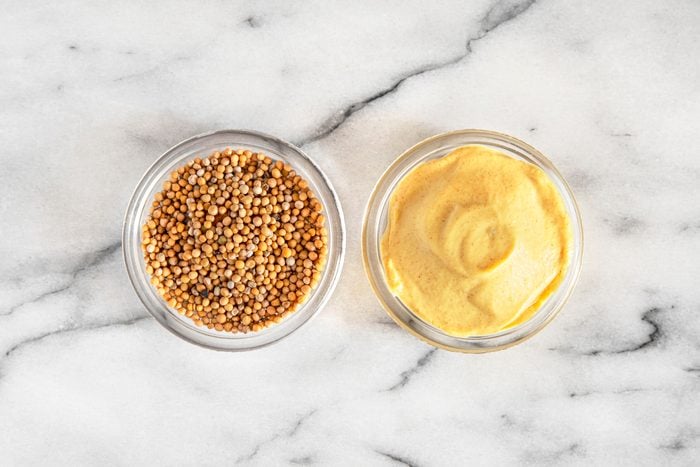
Mustard
Mustard seeds are mentioned in Greek and Roman texts going back to 3000 BCE. While most spices are grown in the tropics, mustard grows primarily in temperate climates. Mustard is sold in the form of seeds, powder and, of course, the condiment mustard, a paste that combines other spices and vinegar or wine. It is commonly used as a condiment in Western cultures, and as an ingredient in dishes from the Indian subcontinent.
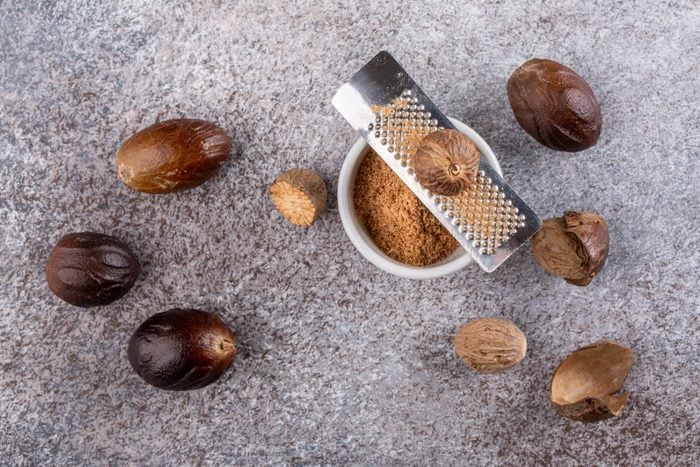
Nutmeg
Nutmeg is the fruit of a tropical evergreen tree that is native to Indonesia. In Western cultures, it flavors baked goods, sausages, sauces and beverages; eggnog is also a popular way to use nutmeg.
The spice played important roles in ancient history. Romans used nutmeg as an incense, and it was a highly valued trading item. In the early 17th century, the Dutch laid claim to the Banda Islands to monopolize the nutmeg trade, which resulted in the establishment of the Dutch East India Company.
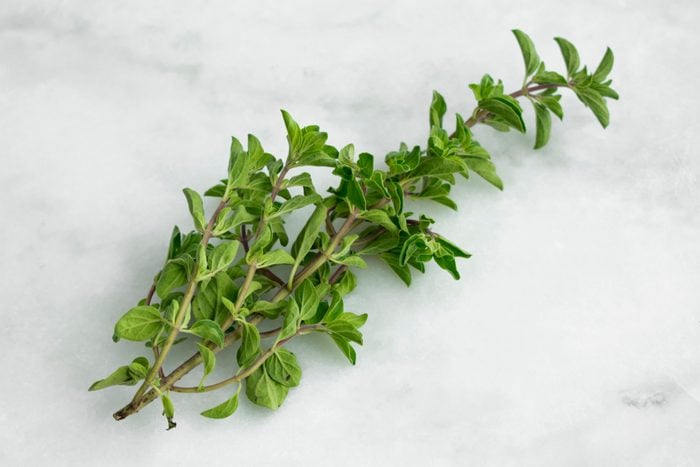
Oregano
Oregano is a low-growing plant whose tiny, pungent leaves are used in pizzas, pastas and pasta sauces. Culinary varieties include Greek and Italian oregano, which should not be confused with ornamental varieties. The ornamental varieties have little flavor and are not used for cooking. Fresh oregano packs much more of a punch than dried oregano, and it’s often used in a bouquet garni to add flavor to stocks and soups.
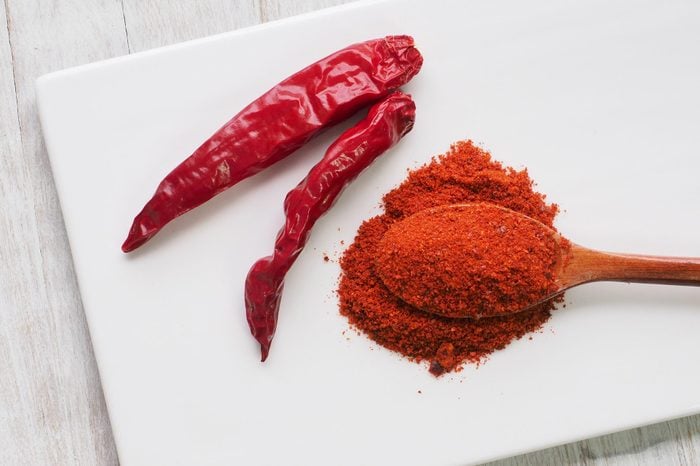
Paprika
Paprika is a seasoning made from dried peppers. Depending on whether the pepper it derives from is sweet or hot and how it’s treated, paprika has a wide variety of flavor profiles; it can be sweet, spicy, hot or smoky. Grocery store paprika is usually sweet paprika, and it’s typically used to add a dash of color and subtle flavor to finished dishes. In contrast, Spanish and Hungarian paprika is brilliant red with an intense, fiery flavor that’s used in dishes such as chicken paprikash.
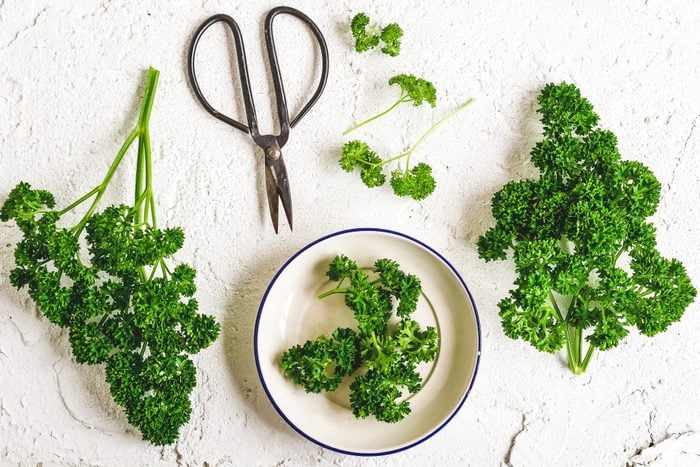
Parsley
The most-common types of parsley are curly parsley and Italian, or flat-leaf parsley; Italian parsley is used in cooking, whereas curly parsley is used only as a garnish. Italian parsley has a fresh, slightly peppery scent. Whether as the main ingredient, such as in parsley pesto, or added to dishes such as lemon-parsley tilapia, it adds freshness and brings out the flavor of other ingredients.
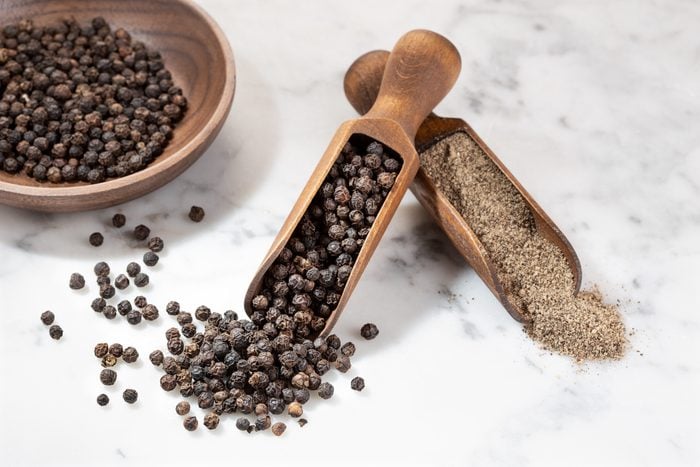
Pepper
Black pepper is made by drying the green, unripe berries of the pepper plant, native to India. White pepper is made from the mature berries, and green pepper is from the fully developed but immature berries. Pepper adds heat to recipes. It’s extremely versatile and can be used in a vast array of dishes, like our Tofu with Black Pepper Sauce and Black Pepper Chicken. It’s so common, in fact, that it constitutes a third of the entire spice trade today.
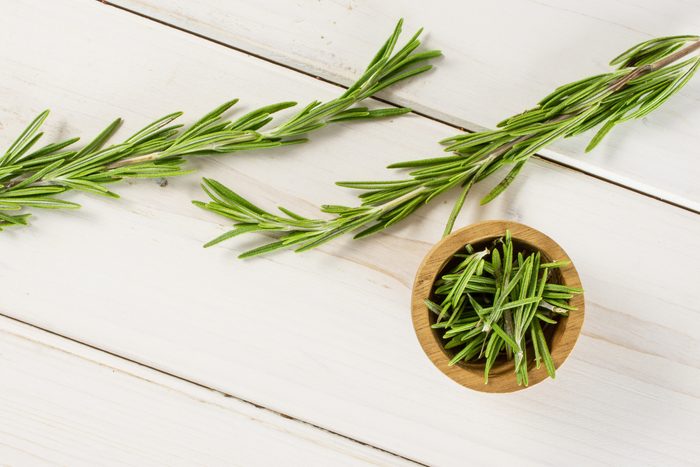
Rosemary
Rosemary is an attractive shrub with stiff, needle-like leaves that’s native to the Mediterranean region. It’s used to season lamb, pork and chicken, and goes well with grains, mushrooms and a variety of vegetables. Rosemary is the herb of legends; in Greek mythology, it was draped around Aphrodite as she emerged from the sea.
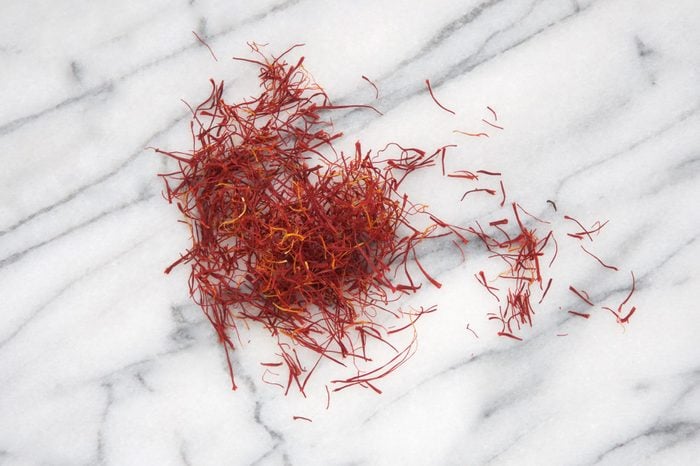
Saffron
Saffron, widely considered the most expensive spice, is harvested by hand from the center of fall-flowering saffron crocus flowers. The vast majority—95%—of this spice is grown in Iran. Saffron lends its rich gold color and earthy flavor to seafood dishes and Persian, European, Asian and Arabic cuisines.
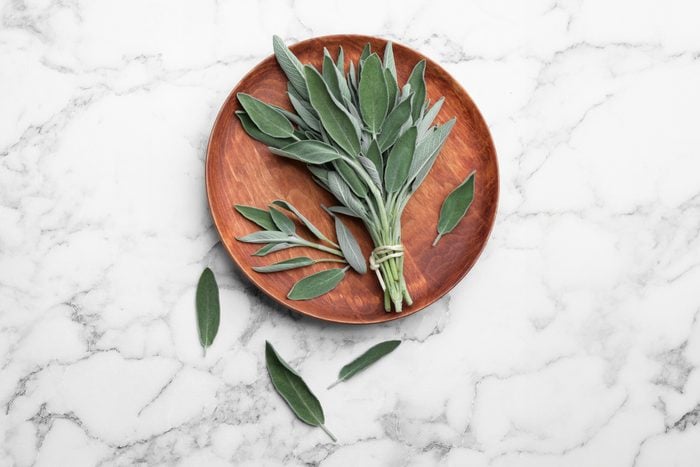
Sage
Sage has a strong, complex aroma and flavor. The herb—whether fresh or ground—is a common addition to stuffing at holiday time, and it’s used year-round in savory recipes ranging from pastas to comfort food basics like meatloaf and pork chops. In ancient times, sage was used to ward off evil and to enhance female fertility.
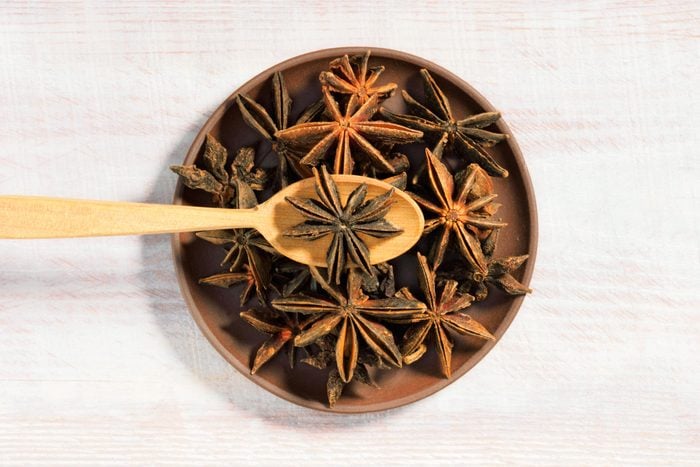
Star Anise
Grown in China, Japan and Southeast Asisa, star anise is the seed pod of an evergreen shrub. It’s used extensively in Chinese cuisine, and plays a star role in a range of recipes like spiced poached pears to cookies. In its powdered form, it’s one of the ingredients in Chinese five-spice powder. Whole star anise adds a sweet, licorice-like flavor to mulled wine, soups and stews, and powdered star anise is used in baked goods.
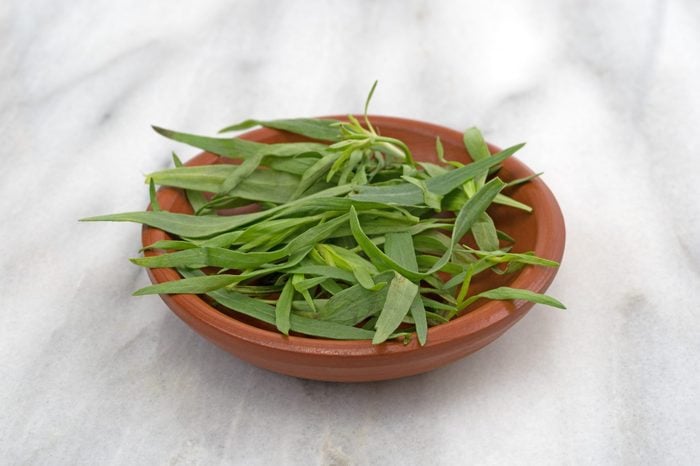
Tarragon
Tarragon is a strongly aromatic herb that has a hint of licorice. While there is Spanish, Russian and Mexican tarragon, it’s most common in French cooking, adding a fresh, “green” tang to bearnaise sauce, as well as fish, chicken and other dishes. Tarragon is among the four herbs that make up the French innovation of fines herbes, which also includes parsley, chervil and chives.
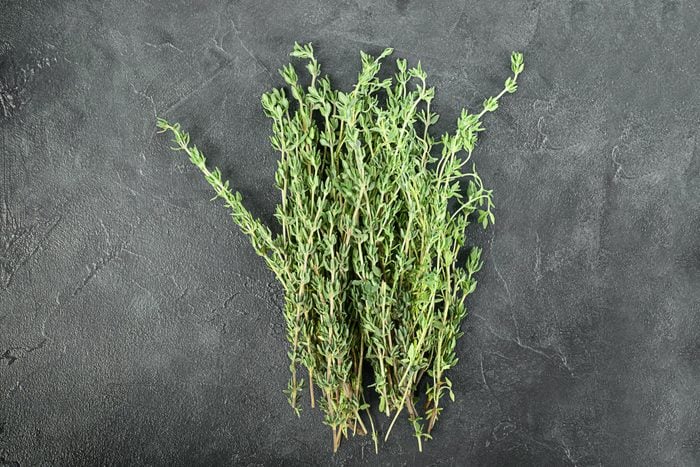
Thyme
Thyme is an herb that is grown and used in cuisines around the world. Fresh whole thyme sprigs can be used to flavor soups, sauces and braised or roasted meats, or the tiny leaves can be stripped to integrate them into dishes. You can, of course, also buy thyme leaves in a spice jar, to make quick work of pasta dishes or vegetables like these roasted carrots. While there are a variety of thyme plants, only common thyme and lemon thyme are used for culinary purposes.
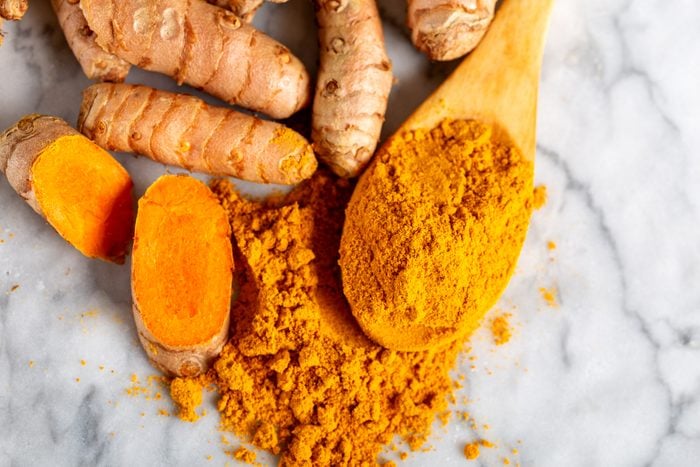
Turmeric
Turmeric, a brilliant gold spice, is the powdered root of a plant in the ginger family. Turmeric has a spicy, slightly bitter, slightly sharp flavor; it’s commonly used to impart a yellow hue to foods such as Thai curry, mustard and relishes and paella. It’s also used to reduce inflammation. When working with turmeric, be careful not to get it onto your hands or clothes—it easily stains anything it touches.

